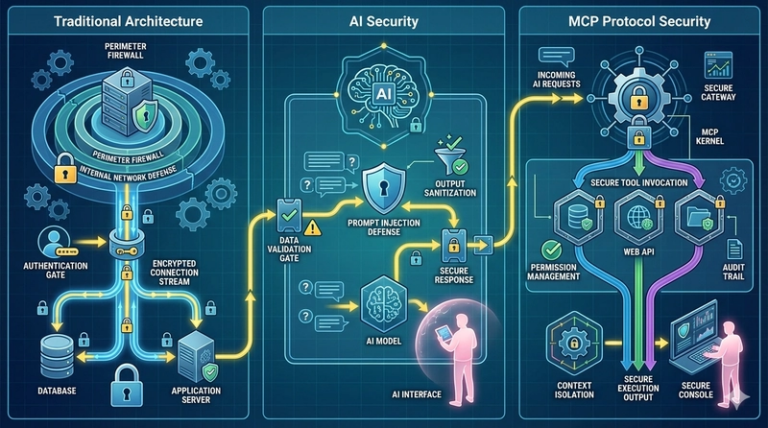Lessons Learned: Building Secure Pipelines in Practice
This is the final article in our 5-part series on transforming chaotic deployment processes into secure, governed CI/CD pipelines using GitHub Rule Sets and workflows.
Series Recap
Over the past four articles, we’ve journeyed from chaos to control:
- Why We Need Secure Deployment Pipelines – We identified the problems with “move fast and break things” culture
- GitHub Rule Sets – We implemented enforceable quality gates through status checks
- Secure Code Review – We added branch protection and automated security scanning
- The Trust Challenge – We solved secure infrastructure previews in forked workflows
Now, let’s reflect on what this transformation taught us about building secure pipelines in practice.
The Reality Check: Time Investment vs. Security Payoff
Here’s the truth nobody talks about: setting up secure pipelines is hard work.
It took me one week to reach my goals—and that was with AI assistance helping me debug GitHub Actions and CDK configurations. Without modern tooling, this exercise could have lasted a month. The infrastructure diffing with CDK alone kept me busy for 3 days, wrestling with permission policies and Lambda execution contexts.
But here’s what I learned: invest the time upfront. The initial complexity pays dividends in preventing deployment disasters and security breaches.
Every hour spent configuring proper validation saves days of incident response later. I’ve seen teams lose entire weekends fixing production issues that a simple status check could have prevented.
The Rule Sets Revolution
GitHub Rule Sets are a game-changer compared to legacy Branch Protection rules.
Before Rule Sets, I was clicking through UI forms, trying to remember which protection rules applied to which branches. Configuration drift was inevitable—different repositories had slightly different policies, and nobody could explain why.
With Rule Sets, I can define JSON-based rules that apply across multiple branches:
{
"name": "production-protection",
"target": "branch",
"conditions": {
"ref_name": {
"include": ["main", "production"]
}
},
"rules": [
{
"type": "required_status_checks",
"parameters": {
"required_status_checks": [
"security-scan",
"infrastructure-diff"
]
}
}
]
}
Key insight: Treat your security policies as code—commit them to your repository and review changes like any other code. This eliminates configuration drift and makes your security posture auditable.
Matrix Strategy: The Speed Revolution
Using GitHub Actions’ matrix strategy transformed our validation process from a painful bottleneck into a smooth experience.
Our original sequential approach looked like this:
- Lint check: 45 seconds
- Security scan: 2 minutes
- Infrastructure diff: 3 minutes
- Total: 6+ minutes of waiting
With parallel matrix execution:
strategy:
matrix:
validation: [lint, security, infrastructure]
jobs:
validate:
runs-on: ubuntu-latest
steps:
- name: Run ${{ matrix.validation }}
run: npm run ${{ matrix.validation }}
Result: All validations complete in under 2 minutes.
Key insight: Parallel validation isn’t just about speed—it’s about developer experience and faster feedback loops. Developers are more likely to fix issues quickly when they get immediate feedback.
The Trust Boundary Challenge
The pull_request_target trigger created our biggest security headache: we needed access to secrets for infrastructure operations, but we couldn’t trust the PR code.
The breakthrough came with the dual-checkout pattern:
- Trusted workflow: Checked out from the target branch with access to secrets
- Untrusted code: Checked out from the PR branch for analysis
- name: Checkout trusted workflow
uses: actions/checkout@v4
with:
ref: ${{ github.event.repository.default_branch }}
path: trusted
- name: Checkout PR code
uses: actions/checkout@v4
with:
ref: ${{ github.event.pull_request.head.sha }}
path: untrusted
Key insight: Never run untrusted code with trusted credentials. Always separate the execution environment from the code being evaluated.
This pattern let us safely diff infrastructure changes without exposing AWS credentials to potentially malicious PR code.
Security Tools Don’t Have to Break the Bank
We achieved robust security scanning using open-source tools instead of expensive enterprise solutions:
- npm audit: Built-in dependency vulnerability scanning
- ESLint security plugins: Static analysis for common security issues
- Custom regex patterns: Detecting hardcoded secrets and sensitive patterns
- Path filtering: Only scanning changed files for efficiency
- name: Security scan changed files
run: |
git diff --name-only origin/main...HEAD
| grep -E '.(js|ts|json)$'
| xargs npm audit
Key insight: Effective security is about layered defense with targeted tools, not necessarily expensive enterprise suites. Smart path filtering ensures we only scan what changed, keeping builds fast.
The Architecture That Made It Work
Looking back, several architectural decisions were crucial for success:
Separation of Concerns
We kept CI validation separate from CD deployment. Status checks validate code quality and security, while deployment workflows handle the actual AWS operations. This separation made debugging easier and allowed us to iterate on each part independently.
Parallel Execution
Matrix strategies gave us faster feedback without sacrificing thoroughness. Developers could see all validation results simultaneously instead of waiting for sequential checks.
Trust Boundaries
The dual-checkout pattern solved the fundamental security challenge of infrastructure diffing. We never had to choose between security and functionality.
Progressive Enhancement
We added security layers without breaking existing workflows. Teams could adopt new policies gradually, reducing resistance to change.
Conclusion: The Investment That Pays Off
Transforming a “move fast and break things” deployment pipeline into a secure, governed system required fundamental changes in how we think about code integration and deployment.
The combination of GitHub Rule Sets, parallel validation workflows, and careful security boundaries created a system that’s both safer and more efficient than our original approach. Developers get faster feedback through parallel checks, while security teams get enforceable policies and audit trails.
While the initial setup took significant effort, the result is a deployment pipeline that scales with team growth and provides the safety net needed for production AWS workloads. The investment in proper CI/CD governance pays dividends in reduced incidents, faster recovery times, and increased developer confidence.
For teams still relying on informal processes and manual checks, the transition to rule-enforced validation is worth the effort. Start with basic status checks, then gradually add security scanning and infrastructure validation as your team becomes comfortable with the new processes.
The future of deployment safety lies not in restricting developers, but in providing them with fast, reliable feedback loops that catch issues before they reach production.
This concludes our 5-part series on building secure CI/CD pipelines. The techniques we’ve covered—from Rule Sets to trust boundaries—provide a foundation for safe, scalable deployment processes that grow with your team.


